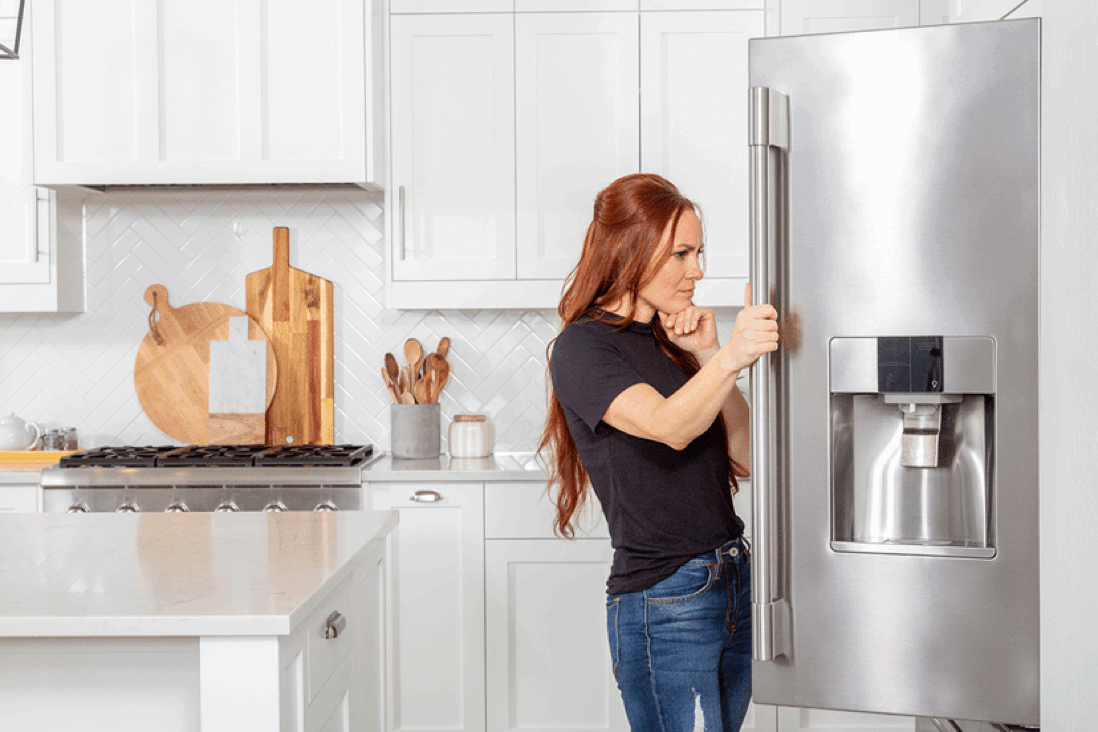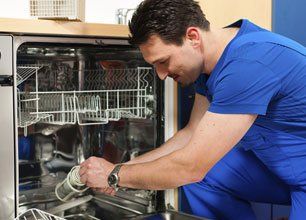How to Prevent Early Appliance Death with Help from Dependable Appliance For SubZero Freezer Repair
How to Prevent Early Appliance Death with Help from Dependable Appliance For SubZero Freezer Repair
Blog Article
The Ultimate Guide to Do It Yourself Device Fixing Methods
When home appliances break down, it's very easy to feel overwhelmed. Dependable Refrigeration & Appliance Repair Service. Yet with the best understanding and tools, you can deal with common concerns yourself. From refrigerators to dishwashing machines, understanding exactly how to repair and repair these gadgets can conserve you money and time. Are you ready to find essential methods that will encourage you to handle repair work confidently? Let's discover the key areas where DIY abilities can make a substantial difference.
Recognizing Common Appliance Problems
When you count on your home devices, it can be discouraging when they all of a sudden quit functioning or break down. Comprehending typical device troubles can help you troubleshoot issues efficiently. If your fridge isn't cooling, inspect the temperature setups or evaluate the door seal for voids. A defective washing device might be due to a clogged drain filter or a broken belt.
If your stove isn't heating, defective elements or thermostat concerns might be to blame. Dishwashing machines usually experience troubles with water drainage, so see to it the filter is tidy and the drainpipe hose pipe isn't kinked.
Additionally, pay attention for unusual sounds; they usually suggest mechanical issues. By identifying these indications, you can conserve time and potentially stay clear of expensive repair work. A little expertise goes a lengthy way in keeping your appliances, so remain informed to maintain everything running smoothly.
Crucial Devices for Do It Yourself Fixes
Prior to diving into do it yourself home appliance fixings, it is essential to collect the right tools to ensure the process goes smoothly. Beginning with a good collection of screwdrivers, including both flathead and Phillips, as they're essential for opening up most devices. You'll also want a set of pliers for gripping and twisting cables or small components.
Don't neglect a multimeter; it assists you examination electrical parts and diagnose problems properly. A socket set is helpful for loosening or tightening bolts, while an energy blade can be helpful for reducing cords or opening up product packaging.
Finally, think about having a flashlight accessible to illuminate dark areas inside your devices. With these important tools, you'll be fully equipped to take on numerous repairs, saving both money and time. Gather your equipment and obtain all set to roll up your sleeves!
Safety First: Precautions to Take
Before you start any type of home appliance repair, it's necessary to focus on safety and security. Make sure you put on individual safety equipment, disconnect the source of power, and keep your workspace organized. These simple safety measures can assist avoid mishaps and ensure a smoother repair work process.

Individual Safety Devices
Safety equipment is an important part of any DIY home appliance fixing task. You need to constantly wear safety goggles to secure your eyes from dirt and particles. A sturdy pair of handwear covers will certainly secure your hands from sharp edges and dangerous materials. Consider using a mask if you're handling chemicals or dust, ensuring you breathe safely while working. Steel-toed boots are also a wise option, particularly when lifting heavy home appliances. Don't fail to remember to wear long sleeves and pants to safeguard your skin from potential injuries. By prioritizing personal protective equipment, you'll greatly decrease the danger of injuries and accidents. Remember, being prepared with the right gear maintains you secure and concentrated on finishing your repair service effectively.
Source Of Power Interference
To assure a safe DIY device repair, detaching the power resource is important. This basic step protects against electrical shocks and guarantees that you can focus on the repair service without stressing about unintentional activation. As soon as you're confident that the power is detached, you can confidently continue with your fixings, knowing you've taken the required preventative measures to protect yourself.
Work Area Organization
A well-organized workplace can make all the distinction in your DIY appliance repair project. Start by clearing your work area of clutter to stop interruptions and mishaps. Outline all your products and devices, organizing similar products together for easy gain access to. Utilize a tool kit or organizer to keep small parts like washing machines and screws had and classified. See to it you've got adequate lights; it'll aid you see details clearly and reduce the threat of mistakes. Don't neglect to maintain security gear like handwear covers and safety glasses accessible. Have a garbage bag useful to dispose of waste quickly. A tidy room not only boosts performance however also maintains you risk-free while you service your device fixing.
Step-by-Step Guide for Refrigerator Repairs
When your fridge starts acting up, it can be irritating, but tackling the issue on your own can conserve you time and cash. Examine for common concerns like temperature changes or unusual noises. For a loud refrigerator, inspect the follower and verify it's not obstructed.
If there's water pooling within, inspect the door seals for damage or dirt, and tidy them if needed. As soon as you've resolved the issue, connect the refrigerator back in and monitor it for a few hours.
Fixing Cleaning Equipment Concerns
Just like fridges, cleaning equipments can present their own set of difficulties, however many issues can be fixed with a bit of troubleshooting. If your maker will not begin, check the power cable and validate it's plugged in.
Tightening these can often solve the trouble. Normal upkeep, like cleaning up the filter, can avoid several issues from emerging.
Repairing Stoves and Ovens
How can you repair typical concerns with your stove or range? Start by examining the power supply.
If your oven isn't heating, check the temperature setups and validate the door seals securely. A defective heating aspect could likewise be the offender; you could need commercial ice machine repair near me to change it if it's harmed.
For uneven cooking, revolve your pans and take into consideration utilizing a stove thermometer to confirm accurate temperature levels. Finally, if you hear uncommon noises or odor gas, switch off the appliance instantly and speak with an expert. By adhering to these steps, you can recognize and resolve lots of common oven and oven problems effectively.
Repairing Dishwashing Machines Facilitated
When your dish washer starts acting up, it can be aggravating, but attending to usual problems isn't as hard as it appears. You'll find general electric refrigerator repair out step-by-step troubleshooting approaches that will help you pinpoint the issue, along with the essential devices you'll require to tackle repair work on your own. Let's make repairing your dishwasher a breeze!
Usual Dish Washer Issues
While dishwashers are developed to make your life easier, they can occasionally run right into typical problems that leave you really feeling discouraged. One regular issue is poor cleansing performance; this commonly takes place due to stopped up spray arms or filthy filters. You may additionally notice water pooling near the bottom, which can indicate a damaged drain or a kinked pipe. If your dishwasher's door will not latch, it could be a basic problem with the lock mechanism or door seal. Additionally, unusual noises can signify loose components or worn-out elements. If you smell something strange, it may be time to check for food particles or a malfunctioning electric motor. Dealing with these issues early can conserve you time and trouble down the roadway (Dependable Refrigeration & Appliance Repair Service Sub-Zero Appliance Repair).

Step-by-Step Troubleshooting
Before diving right into fixings, it's important to identify the particular concern your dishwasher is encountering. If it's not cleaning effectively, Beginning by examining. Examine the spray arms for obstructions and guarantee they spin openly. Take a look at door seals and pipes for any type of damage if it's dripping. For weird sounds, listen closely during cycles; foreign things might be embeded the filter or impeller. Inspect the power supply and door latch if your dishwashing machine won't start. Do not forget to consult your customer guidebook for fixing tips certain to your version. By systematically attending to each possible concern, you can determine the issue and take the essential actions to repair it, making your dishwashing machine function like brand-new again.
Necessary Fixing Devices
Having the right tools available can make all the distinction when repairing your dishwashing machine. Start with a screwdriver set, as you'll often require both Phillips and flathead alternatives. A multimeter's vital for identifying electrical problems, while pliers can help you grip and control different components. Do not forget a bucket or towels for any water spills throughout repair work.
You could likewise want a degree to assure your dishwashing machine's appropriately lined up. With these crucial devices, you'll be well-equipped to take on any type of dishwasher repair work obstacle that comes your method.
Regularly Asked Questions
If a Home Appliance Is Worth Repairing?, how Do I Determine.
To determine if an appliance's worth repairing, consider its age, fixing costs, and existing worth. You may desire to spend in a new version rather - Best Sub-Zero repair Service Dependable Refrigeration & Appliance Repair Service. if repair services exceed half the substitute expense.
Can I Find Replacement Components In Your Area for My Appliance?
Yes, you can commonly locate replacement parts locally for your appliance. Examine hardware stores, device service center, or neighborhood classifieds. Don't forget to bring the model number to guarantee you get the appropriate component!
What Usual Mistakes Should I Avoid When Repairing Home Appliances?
When repairing home appliances, avoid rushing through right here diagnostics, disregarding safety and security precautions, or making use of incorrect devices. Do not avoid reviewing manuals or viewing tutorials; they give necessary advice. Hold your horses and complete to assure successful repair services and avoid more damages.
For how long Does a Common DIY Device Repair Work Take?
A regular do it yourself device repair normally takes one to 3 hours, depending upon the intricacy. You'll intend to gather your tools and products first, and comply with instructions carefully to prevent unneeded hold-ups.
Are There Any Warranties for Do It Yourself Appliance Fixes?
When you take on DIY home appliance repairs, guarantees commonly do not cover your work. Some producers might recognize guarantees for components you replace. Always inspect your appliance's warranty terms prior to starting any repair work to avoid concerns.
Before diving into DIY device repair services, it's vital to gather the right tools to assure the process goes smoothly.Prior to you begin any home appliance fixing, it's essential to prioritize safety.To ensure a secure Do it yourself appliance repair work, detaching the power source is vital.A well-organized job location can make all the difference in your Do it yourself device repair service task. Constantly examine your appliance's warranty terms before starting any kind of repair work to avoid problems.
Report this page